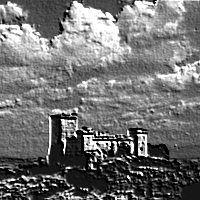Narnia's Allegory

The Chronicles of Narnia written by C.S. Lewis at
the end of the Fifties were fully ignored and so unknown to Italian public
until the first appearance of the film inspired by the book The Lion, the
Witch and the Wardrobe and directed by Andrew Adamson. The current work has
been designed to give more credit to Lewis' novel. The mild interest of Italian
public for Lewis' chronicles converged on an analogous unconcern of Italian
critics at Lewis as Christian or man of faith. In this way it was not possible
to really appreciate his deep message and his novel's values. Only a revival of
the fantasy genre promoted by film industry in the last decade could
caused an high stirring interest of Lewis' work. Italian critics have
discovered Narnia's chronicles as an interior and spiritual journey that gives
everyman, adults or children, the opportunity to reflect that there's a
spiritual dimension parallel to our everyday, human and material reality. As he
wrote: "all those proofs" should be understand in a right way. The proofs
were not an experiment that God made in my faith or my love to taste the
quality. This, He already knew; it was me that don't know. It's rather a call,
to justice where God makes us to be defendants and at the same time witnesses and
judges. He always knew that my temple was a paper castle. The one and only way
that I can also understand is to push it down. And if this happen, God will
pushed it down again. And again, and again all those times that are necessary.
Until that, all that times He will leave me alone, like a hopeless case, to
construct a crepe paper palace in hell forever". Life is a spiritual
pilgrimage from a castle to another and everyone of them falls down "again and again all those times that are necessary"
until we'll understand that the true dwelling is only “heavenly”.
The
first chapter concerns the topic of man and his spiritual journey with his
"proofs" and his "paper's castles", following a narrative
and chronological thread, through which we'll see the progresses and the
regresses of a pilgrimage, starting from the author's childhood. The second
portion of the first chapter deals with his thought, his philosophy of life,
and, in particular, with his literature, linked to his conversion to Christ.
The
second chapter consists of a brief presentation of his most famous novel: The
Chronicles of Narnia. It will be illustrated in a sort of summary, which
are the experimental contents that every book of this novel contains, analyzing
the possible allegories or the deep meaning of the stories hidden behind myths
and fantastic characters.
In
the last and final section it has been proposed a study that links Lewis’ novel
to the town of Narni. A mysterious connection seems to be
between the two cities: one in the fantasy world and one in Italy. At the very
conclusion of this work there's a short description of one of the most
representative monuments in Narni, Albornoz's Rock that thanks to his story,
geography and tradition can better complete what we can comprehend of Lewis'
greatest literary work.

for more news see also :
Intervista Global Junior Challenger




